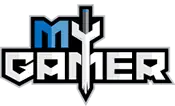Not trying to reinvent the wheel, Summon Night: Twin Age uses tried and true RPG gameplay techniques to deliver a mediocre gameplay experience.
Twin Age is actually a sequel from two highly praised GBA games. But unlike the GBA renditions, this new DS title uses a more hack-n-slash style of gameplay over the typical menu driven/fighting style RPGs. Gameplay is a decent mixture of Zelda: Phantom Hourglass and Secret of Mana. Making smart use of the DS’s hardware, stylus based combat feels decent enough to warranty an entire game, but there are times when I was hoping for something a little more.
Building off the success and functionality of Phantom Hourglass, all play control is controlled via the touchscreen. Just like playing Link’s latest DS journey, I was a little skeptical of solely using my stylus to control everything. But because of the well thought out user interface, the player has convenient access to movement, attacks, and magic without ever having to stop gameplay. Movement is performed simply by drawing a line as to where you want your character to move. To attack, just tap your target. The two tool bars that board the screen give the player constant access to both items and magic, a major plus in the gameplay department.
While the interface is coherent, battle can feel a little empty. Once the player taps on a bad guy, the game simply goes into autopilot, fighting until someone falls. Yes, the stylus based control works, but for some reason I feel that it is not as satisfying as attacking with a combination of face buttons. With each press of a button, the player feels engaged in combat as opposed to just tapping a baddie once and let the battle play out. Further, this game also possesses a high difficultly level. On the first level that doesn’t hold the player’s hand via a tutorial, I got my ass kicked several times before I actually made it through this first stage. Grinding and keeping a watchful eye on your health meter is a must here.
Like any RPG, buddies will join your quest in pummeling bad guys. But unlike most RPGs that feature computer controlled AI, players will rarely have to baby sit. In fact, there are many times where these friendly AI buddies will actually help in combat and even pass out a cure spell from time to time. While it does not take the place of a human controlled co-op buddy, the programming behind this friendly AI is a definite step in the right direction. This also stems to the character customization options. The skill system gives players a way to customize your hero as you see fit while items can be forged from goodies dropped by enemies. As time goes on, more and more NPCs will join your side, forcing the player to individually select which characters to use in battle.
Using a typical RPG story arc, players will definitely feel a “been-there-done-that” plotline. When spirits and monsters start running amok, you, the hero with the lonely past must right what has been wronged. Not that there is anything wrong with this storyline, it is just that gamers have been hearing the same story since the birth of the RPG. While palatable, dedicated gamers will stay for the grind-inducing gameplay, not necessarily for the story.
One other let down is the lack of co-op play. One of the main reasons why Secret of Mana remains a fan favorite was the co-op action. There is no reason why this element should not have been present in a game like Twin Age. I understand that planning this would have increased development time, but at least give gamers a local wireless option if WiFi is totally out of the question. The game contains several NPC AI buddies. Why can’t a friend join my quest as one of them? Trading items and weapons is merely a ploy to place the multiplayer icon on the back of the game’s packaging.
Just like most Atlus games, the game has high presentation values. The colorful 2D sprites are well animated and are nicely detailed despite being on a small screen. Short clips of full anime video will pop up from time to time as well. Filling out this anime graphical mood of the game, the musical score retains the same presentation values. My only complaint is I wish there was more voice acting. From time to time, a character may yell out a gasp or huff during text based conversation, but having each character speak full sentences from time to time would have given this game a little more personality. There was quite a bit of speech when the game first starts, but it seems to pop up less often as the game goes on.
Summon Night: Twin Age doesn’t really take any new steps to advance the action RPG genre. Instead, it builds off of gameplay techniques that have been created in past games, creating an enjoyable but slightly used feeling. But even though it uses this tried-but-true gameplay formula, this title excels in the game presentation department, an Atlus staple. If you yearn for a Baldur’s Gate or Secret of Mana hack-n-slash gameplay on your DS, then Twin Age is a great place to look. Just be aware that the combat is more on the difficult side.
…Check out the Summon Night GBA games too.
Editor in Chief - been writing for mygamer,com for 20+ years. Gaming enthusiast. Hater of pants. Publisher of obscure gaming content on my YT channel.
- Twitter @ZackGaz
- youtube.com/@ZackGaz
- Personal blog at: https://squallsnake.com/
- BuyMeACoffee: https://www.buymeacoffee.com/zackgaz
- Patreon: https://www.patreon.com/squallsnake
- Twitch: https://www.twitch.tv/squallsnake7
- I am the EiC of: https://www.MyGamer.com/
















Leave a Reply